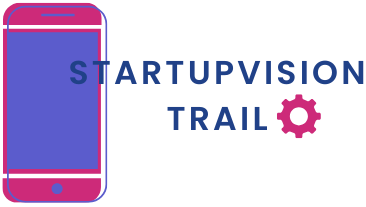Table of Contents
ToggleIn a world where software rules the roost, the biggest SaaS companies are the undisputed champions of the digital arena. These cloud-based titans are not just selling software; they’re transforming how businesses operate, one subscription at a time. From streamlining workflows to enhancing customer engagement, they’ve become essential partners for companies looking to stay competitive.
Imagine a universe where your favorite software is always up-to-date and accessible from anywhere—sounds dreamy, right? Well, that dream is a reality thanks to these giants. They’re not just raking in profits; they’re redefining productivity and innovation. Buckle up as we dive into the realm of the biggest SaaS companies, where the only thing more impressive than their growth is their ability to make your work life a whole lot easier (and maybe a little more fun).
Overview of SaaS Industry
The SaaS industry has revolutionized how businesses operate, emphasizing cloud-based software solutions. This model enables users to access applications anytime, which enhances productivity and flexibility.
Definition of SaaS
SaaS, or Software as a Service, refers to a delivery model in which software is hosted in the cloud and accessed via the internet. Organizations no longer require on-premises installations or maintenance; everything occurs online. This model allows users to use software on a subscription basis, providing regular updates without the need for manual installations. SaaS encompasses various applications, including email tools, customer relationship management systems, and collaboration platforms.
Importance of SaaS in Today’s Market
SaaS plays a crucial role in the contemporary market, driven by the increasing demand for efficiency and scalability. Companies can reduce IT costs through customizable solutions that adapt to their needs. With approximately 94% of enterprises using cloud services, SaaS has become integral to business strategy. Rapid deployment and user-friendly interfaces enhance user experience and facilitate collaboration. The flexibility of SaaS solutions supports remote work environments, enabling teams to stay connected and productive regardless of location.
Key Players in the SaaS Market
The SaaS market features key players that dominate with innovative solutions and substantial market reach.
Top Five Biggest SaaS Companies
Salesforce stands out as a leader in customer relationship management, focusing on cloud-based sales and marketing solutions. Microsoft, with Microsoft 365, provides a comprehensive suite that enhances productivity across various business functions. Adobe excels in creative software, offering cloud solutions for digital media professionals and enterprises. Shopify supports e-commerce growth with streamlined tools for online retailers, making it easier to set up and manage businesses. Finally, Zoom has transformed communication with its user-friendly video conferencing platform, especially relevant during recent shifts toward remote work.
Comparison of their Revenue Models
Most Saas companies leverage subscription-based revenue models, ensuring predictable income streams. Salesforce operates primarily on recurring subscriptions, which grants access to its CRM tools. Microsoft uses a similar model for Microsoft 365, promoting various plans tailored for individuals and businesses. Adobe offers subscriptions for its Creative Cloud, allowing users to access a range of design tools. Shopify provides tiered subscriptions based on business size and needs, while Zoom’s strategy includes free access with paid tiers that unlock advanced features. Each model prioritizes customer retention and long-term growth.
Major Innovations by Leading SaaS Companies
Major SaaS companies consistently push the boundaries of technology, introducing innovative solutions that redefine industry standards. Notably, these advancements directly impact how businesses operate today.
Notable Technologies and Solutions
Salesforce pioneered customer relationship management solutions, integrating artificial intelligence to enhance user experiences. Microsoft 365 offers cloud-based productivity tools that streamline collaboration across teams. Adobe has reimagined digital creativity with solutions like Adobe Creative Cloud, providing seamless access to creative software. Shopify empowers entrepreneurs with e-commerce solutions, enabling businesses to flourish online. Zoom transformed communication with its robust video conferencing platform, simplifying remote interactions.
Impact on Business Operations
These innovations enable efficient workflows, facilitating rapid decision-making and enhancing teamwork. Businesses enjoy improved customer engagement due to advanced analytics and automation tools. Performance tracking has become easier, allowing for real-time insights into operational effectiveness. Overall, the integration of these technologies cultivates adaptability within organizations, promoting growth and competitiveness in the digital age.
Challenges Faced by SaaS Companies
SaaS companies encounter various challenges as they navigate the competitive landscape of the digital marketplace. Understanding these challenges is crucial for maintaining growth and innovation.
Competition in the Market
Intense competition defines the SaaS market, with numerous players vying for customer attention. Established companies like Salesforce and Microsoft contend with emerging startups that offer unique solutions. Differentiation becomes essential for survival, pushing companies to invest in innovative features and exceptional customer support. Many providers focus on niche markets, leveraging specialized offerings to attract users. Continuous market analysis allows companies to anticipate trends and adjust strategies accordingly. With many options available, customer loyalty hinges on delivering value and maintaining strong relationships.
Security and Privacy Concerns
Security and privacy issues pose significant threats to SaaS companies and their users. Data breaches can severely undermine customer trust and damage reputations. Consequently, companies must prioritize robust security measures to protect sensitive information. Compliance with regulations like GDPR and HIPAA adds another layer of complexity and requires constant vigilance. Companies often implement encryption practices and regular security assessments to safeguard data. Transparency in data handling and privacy policies helps build user confidence, making these concerns integral to business strategies. Ensuring security not only protects user data but also strengthens brand integrity.
Future Trends in the SaaS Industry
The SaaS industry is poised for significant transformation. Continued innovation and customer demand drive growth predictions. By 2027, the global SaaS market could exceed $600 billion, reflecting a compound annual growth rate of 28.6%. Companies focusing on specific niches within the SaaS model show strong potential for expansion. SaaS providers will increasingly prioritize customer-centric approaches, ensuring that user experience shapes future offerings. Subscription models emphasize long-term relationships, making retention strategies vital.
Predictions for Growth
SaaS companies can expect diverse growth opportunities. Enterprises increasingly adopt cloud solutions, valuing scalability and flexibility. Organizations are shifting budgets towards digital transformation, enhancing SaaS relevance across sectors. Additionally, integration of Artificial Intelligence solutions will further streamline operations and improve customer insights. More companies may prefer platforms that offer customizable solutions, allowing tailored experiences for varied user needs. Increased investment in automation technologies will likely enhance efficiency and drive profitability.
Emerging Technologies to Watch
Emerging technologies will define the next wave of SaaS innovation. Blockchain technology promises improved data security and transparency, attracting attention from progress-driven SaaS firms. Machine learning capabilities within SaaS applications streamline processes and refine decision-making. Internet of Things connectivity enables SaaS to integrate seamlessly with smart devices, promoting efficiency across multiple environments. Low-code and no-code development platforms empower non-technical users to create applications, expanding accessibility in software development. As these technologies evolve, they’ll drive industry standards and reshape user interactions.
The landscape of SaaS is evolving rapidly as companies strive to meet the demands of an increasingly digital world. Major players continue to innovate and refine their offerings to enhance productivity and user engagement. As the industry grows and adapts to emerging technologies, the importance of robust security and customer-centric approaches cannot be overstated.
With a projected market expansion exceeding $600 billion by 2027, SaaS companies are well-positioned for future success. Their ability to provide flexible, scalable solutions will be crucial for organizations looking to thrive in a competitive environment. The journey of SaaS is just beginning, and its impact on business operations will only deepen in the years to come.





